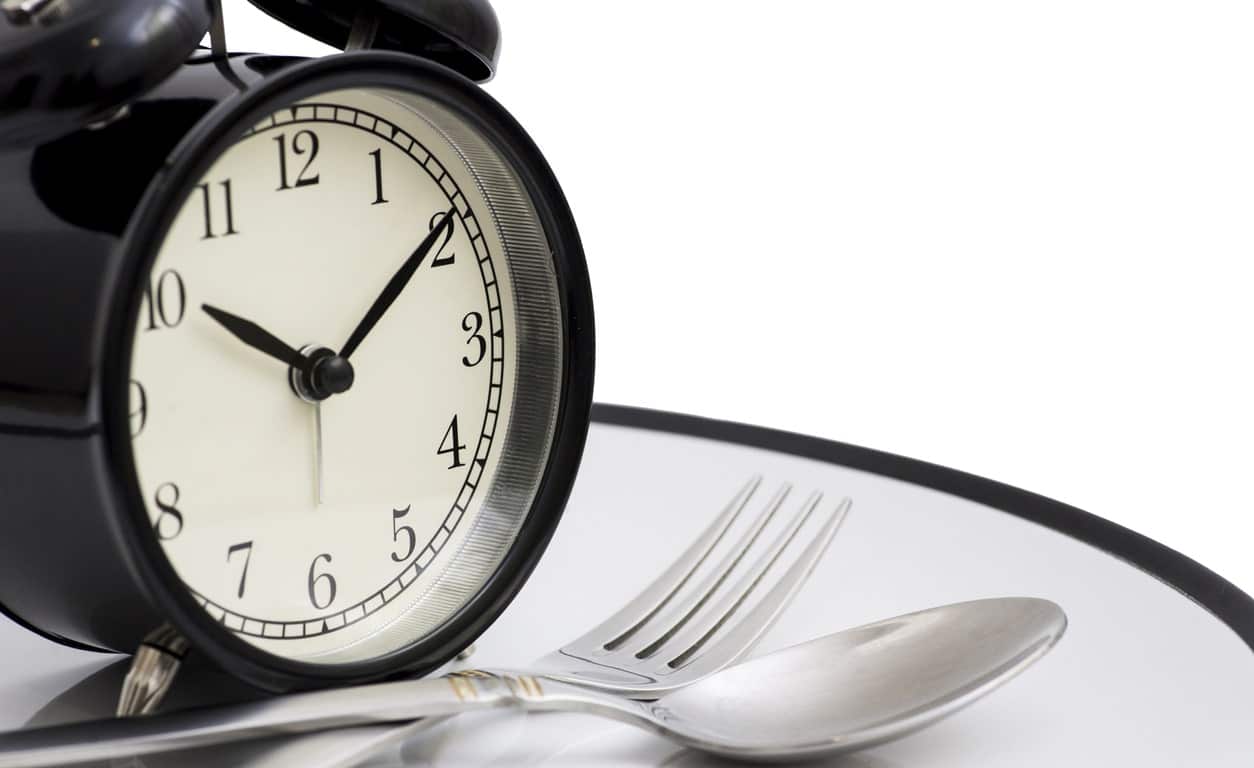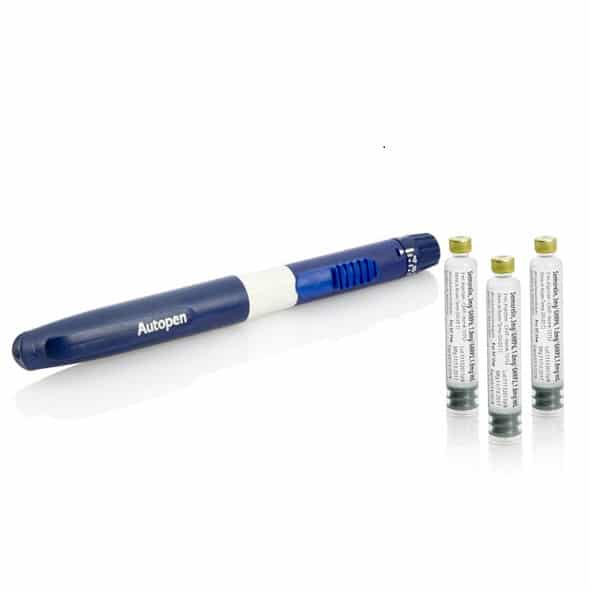
HGH, Fasting and Anti-Aging: Does It Increase Growth Hormone Levels?
Table of Contents
Next to diet, sleep, and exercise, intermittent fasting (known commonly as IF) is one of the single most effective lifestyle changes that a person can make to improve hormone his or her health as well as overall health in general.
In this article, we’ll explore the medical benefits of IF and its powerful role in anti-aging medicine, how fasting affects human hormones, and the easiest way to begin practicing fasting in own your life to take greater control over your health.
What Is Fasting?
As an ancient technique used as a spiritual aid since the dawn of recorded history, fasting is most often associated with religious/cultural traditions, such as Lent in Christianity or Ramadan in Islam. Many traditions teach, as St. Augustine put it, that “fasting cleanses the soul and raises the mind.” Scientifically speaking, such common ideas about the healing powers of fasting have a legitimate basis in hard science.
The clinical literature exploring the many fascinating health benefits of fasting has exploded in recent years, fueling a renewed interest in this ancient healing art among the general public. In important ways we will explore later, fasting has become known as a potent anti-aging tool that any individual with interest in boosting both the longevity and quality of his or her life should seriously consider.
There are several methods and variations of fasting, but it essentially means to “abstain from all or some kinds of food or drink” (no calories) for a set period of time – hours, days, or, sometimes, weeks.
What Does “Intermittent” Fasting Mean?
If an event or activity is “intermittent,” that means it occurs at intervals across time, stops, then begins again in a repeating pattern. Weight lifting in the gym, for example, is an intermittent activity because you perform a set (series of movements), then take a rest, then perform another set.
“Intermittent fasting,” likewise, simply means restricting caloric intake during certain time frames (called the “fasting window”) and eating normally within other time frames (called the “feeding window”). Below are the most popular IF fasting programs.
Types of Fasting
Although IF may seem like an inconvenience, it’s actually quite easy to adopt an IF eating plan to meet your needs. In fact, many people who practice IF find it liberating because it frees them up from having to think about either breakfast or dinner.
If you are considering beginning an IF protocol to improve your health, you have several options that you can select from to best fit into your schedule:
- Daily Fasting (the 16/8 Method and others). This is by far the simplest and most common form of IF. It calls for daily fasting and eating windows that nearly anyone can manage. Per the name, this regimen involves 16 hours of fasting (8 hours of which you are theoretically asleep) followed by 8 hours of eating freely. So, if you eat lunch at noon, you can continue eating as you like until 8 pm, at which time your feeding window closes and your fasting window begins.
You can alter this schedule as you please – the important thing is that you stick to your no-calorie commitment during the fasting window. Here are common variants of a daily fasting protocol.
| Daily Fasting Protocols | |||
| Fasting Window | Feeding Window | Example | |
| 16:8 Method | 16 hours | 8 hours | Eat 12 pm – 8 pm daily |
| Warrior Diet | 20 hours | 4 hours | Eat 4 pm – 8 pm daily |
| One Meal a Day (OMAD) | 23 hours | 1 hour | Eat 7 pm – 8 pm |
- Alternate day fasting (ADF). Under this approach, you either a.) abstain from calories altogether or b.) consume under 500 calories on one day, followed by normal eating the next day. The benefits of plan are that you can satiate your appetite on feeding days. Also, many people find the complete removal of food during the 36-hour fasting window liberating. The major downside is that, especially for IF beginners, caloric deprivation for that length of time can be difficult.
- Eat Stop Eat. This regimen calls for 2-3 24-hour fasting periods per week, with normal eating in between. Again, this particular IF eating protocol is popular because of its simplicity and effectiveness – the longer 24-hour fasting windows may turbo-charge many of the benefits seen in daily fasting, particularly for autophagy (cell recycling).
What Can You Eat or Drink During a Fast?
One of the most common fasting-related questions that pops up on forums devoted to fasting is: What can I drink or eat during a fast? The answer, unfortunately, is: not a lot. Fasting requires near-zero caloric intake to be effective – that means no meals, no snacks, no chewing gum with sugar, etc. If an item contains more than ten calories, you cannot consume it during a fast, full-stop.
Here is a list of acceptable items you can consume during a fast:
- Water.
- Black coffee (no sugar, no dairy).
- Green tea.
- Black tea.
- Bone broth (for electrolytes).
Although some fasting “purists” argue against anything other than water, there is some good evidence that coffee might speed up the health benefits of fasting. Similarly, green tea is known to accelerate fat oxidation (fat burning), which can aid weight-loss efforts – a common reason for fasting.
The bottom line: stick to the above drinks and nothing more to reap the maximum benefits from your fast.

What Happens Inside the Body During a Fast?
As mentioned previously, most people fast to gain the impressive anti-aging health benefits. Below you’ll find everything you need to know about how fasting affects your body, and what is going on from the time you begin your fast until your next feeding window.
What Are the Anti-Aging Health Benefits of Fasting?
Here are the research-backed benefits of IF:
- Cellular recycling (i.e., autophagy).
- Metabolic flexibility (Lower fasting insulin levels drop and increased fat burning).
- Fat loss (especially dangerous visceral fat, i.e., “belly fat”).
- Reduced inflammation.
- Lowered risk of chronic disease.
- Significantly boosted brain function.
- Balanced hormones (increased human growth hormone secretion).
Stages of Transition From Fed State to Fasted State
The jump from a fed state to a fasted state in which you are reaping maximum health benefits doesn’t occur immediately. Rather, the process is a transition that occurs over several hours.
Here are the essential steps of the feed-fast cycle.
- Feeding. Food is chewed, swallowed, and digested by the stomach over the course of several hours. Macronutrients (carbohydrates, fats, and proteins) and essential micronutrients are extracted from the food.
- The post-absorptive phase. In the first handful of hours following a meal, the nutrients absorbed through the intestines are packaged and distributed throughout the body. In turn, insulin is released by the pancreas which shuttles energy and nutrients into various organs and tissues, with the excess converted into fat.
- Gluconeogenesis. About 8 hours into the fast (depending on carbohydrate intake), the body begins to look for extra glucose (blood sugar) to supplement falling supplies in the blood. Triglycerides and amino acids are two primary ingredients used in the process, which are broken down and turned into usable energy.
- Ketosis. In the absence of carbohydrates, the body will exhaust its glycogen stores 12-14 hours into a fast and will eventually begin to look for alternative fuel sources – which it will find in body fat. Through the breakdown of fatty acids, the liver produces bodies called ketones which travel to tissues and organs to be used as fuel. The transition into ketosis is where the major benefits of fasting begin to accelerate.
- Protein conservation phase. Fasting triggers the release of growth hormone, which provides a GH-mediated inhibition of muscle protein breakdown and other benefits in the fasted state. This process is critical to protect muscles and other protein-comprised structures in the body.
The protection afforded to muscles by growth hormone results in the maintenance of muscle mass even in the fasted state. Without enough HGH, the body will catabolize proteins in the muscles during fasting periods and muscle breakdown will occur.
How Does Fasting Affect Hormones?
Let’s explore how several major hormones are affected by fasting.
- Insulin. Following the initial post-absorptive phase of the feeding/fasting cycle described above, insulin levels drop as the body depletes its supply of glycogen. For this reason, researchers have concluded that IF “may provide a significant metabolic benefit by improving glycemic control, insulin resistance, and adipokine concentration with a reduction of BMI in adults.”
- Adrenaline. Otherwise known as epinephrine, adrenaline is a critical component of the hypothalamic-pituitary-adrenal (HPA) axis, a neuroendocrine network responsible for a large array of functions. Adrenaline levels spike as the body transitions into the protein conservation stage to stimulate fat burning and to aid in the metabolic protection of proteins. The chart below shows elevated epinephrine and norepinephrine levels during fasting.
- Human growth hormone (HGH). Growth hormone is critical for good health, and many Americans experience age-related declines in HGH levels as they move through the years.
Studies have shown a massive 5-fold increase in HGH levels in fasting individuals from the fed state to the fasted state.
What Happens to Electrolytes During a Fast?
Sodium, phosphate, potassium, chloride, calcium, and magnesium are electrolytes. They are responsible for a number of functions, including blood pressure and fluid level regulation. As we discussed, insulin levels drop in the fasted state. As a result, the kidneys begin getting rid of sodium, potassium, and water, which are excreted through urine.
Most people can weather the electrolyte loss during short fasting windows. However, electrolyte loss during fasts can cause unpleasant symptoms, including dehydration, headaches, and fatigue. Symptoms of fasting-induced electrolyte loss have sometimes been called the “keto flu.”
Drinking plenty of water and supplementing with electrolytes during a fast can prevent the unpleasant side effects of the electrolyte and fluid loss commonly experienced during a fast.
How to Safely Increase HGH Levels With Fasting
We explored the direct correlation between fasting and improved HGH levels earlier. If you are experiencing one or more of the following symptoms that commonly result from an HGH deficiency, it’s possible that they may be due to low levels of the hormone in your blood:
- Loss of energy (chronic fatigue).
- Weakened bones (including osteoporosis).
- Reduced sex drive (libido).
- Lack of motivation.
- Loss of muscle mass.
- Mental health disorders (anxiety and depression).
A simple blood test can determine the presence of an HGH deficiency, otherwise known as growth hormone deficiency (GHD). If you suspect that you or a loved one might have an HGH deficiency, seek care from a licensed endocrinologist to find the right diagnosis and corresponding treatment. In addition to therapy, an optimized diet – with IF as an integral component – should be part of any plan to safely and effectively elevate long-term HGH levels.
Because the 16:8 method is the easiest fasting protocol to stick to, you might want to start with that schedule to “get your feet wet.” As your body adjusts to periods of no caloric intake, your metabolic flexibility will improve dramatically and you will find that you can conquer even day-long fasts with no problem.
